KU grounds crew taking a new, more strategic and sustainable approach to landscaping
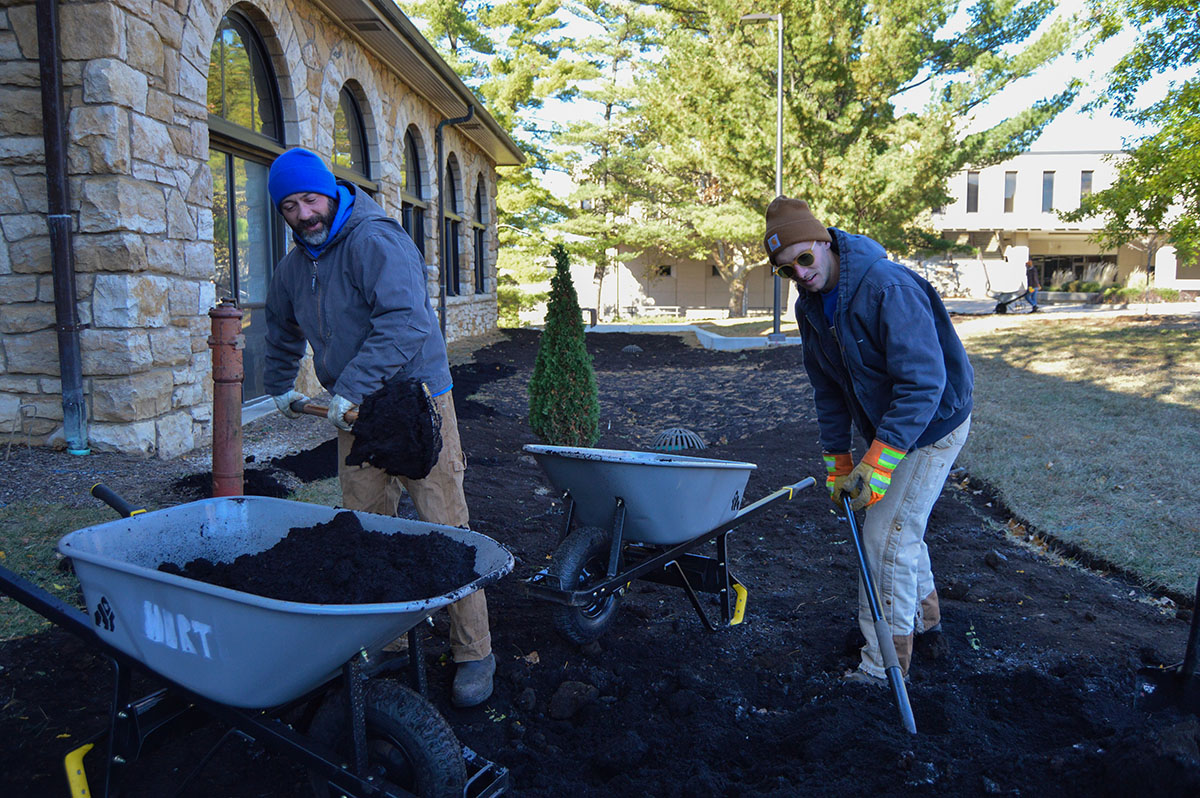
LAWRENCE — Before westward expansion, approximately 170 million acres of grass stretched across the central United States, from the eastern edges of the Dakotas down to southeastern Texas, according to the National Park Service. Less than 4% of that native prairie remains intact today, but much of what has survived resides in Kansas.
Joe Fearn, who joined the University of Kansas as landscape manager in late 2021, has leaned into making the Lawrence campus scenery uniquely Kansan – a landscape that speaks to the state’s prairie roots.
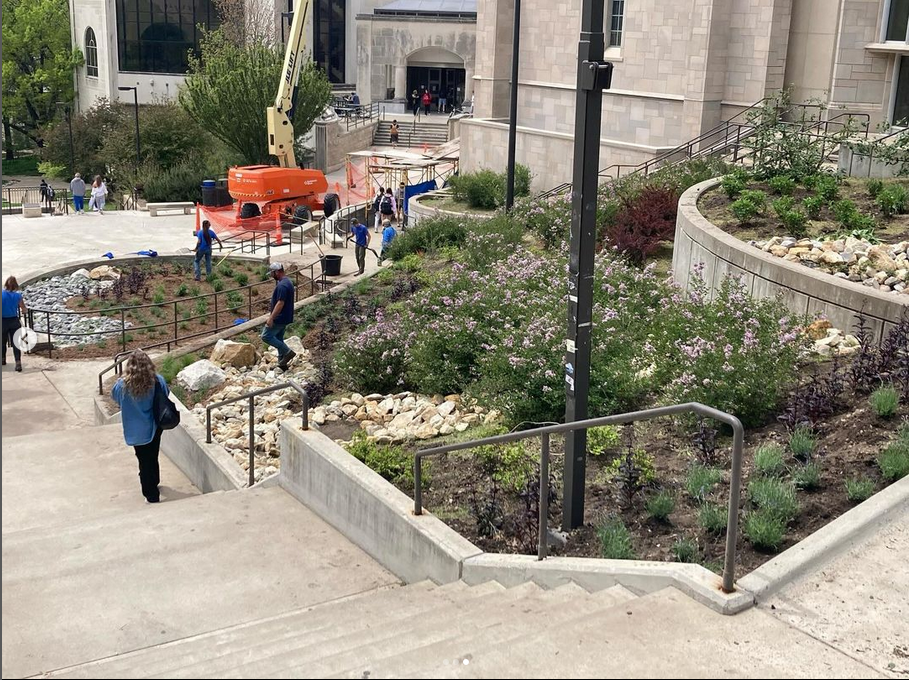
This plan doesn’t involve planting native species at random and letting them run wild; KU is still a learning and research institution, after all. Fearn’s personal philosophy for landscaping reconciles progressive and sustainable landscaping with a realistic and functional grounds management approach. His outlook encompasses not just what needs to be done in the next few years, but in the decades to come, sculpting an environment that balances self-sustainability and intentional grooming.
Fearn said his method focuses on working with the landscape to enhance its natural charm to better meet the needs of the community instead of constantly trying to fight and manipulate it.
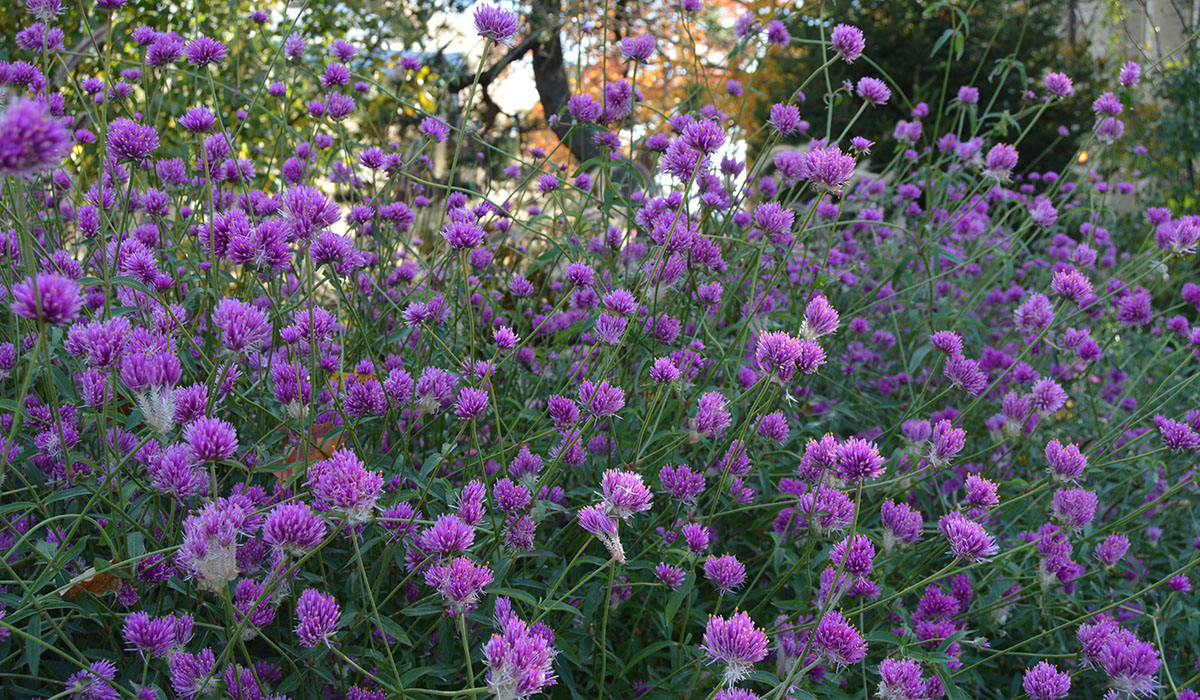
“You can’t have a prairie on Jayhawk Boulevard,” he said, “but you can evoke that. You can have vestiges of prairie. You can have something with proper landscape design principles. You can utilize those to convey an idea.”
Fearn previously served as head groundskeeper at Springfield Greene County Parks and Drury University, both in Missouri, and more recently as the horticulturist supervisor at Mississippi State University. He’s worked in every facet of the industry from golf courses and sports turf to irrigation, but Fearn said what he truly enjoys is being able to comprehensively work on a site for the long term.
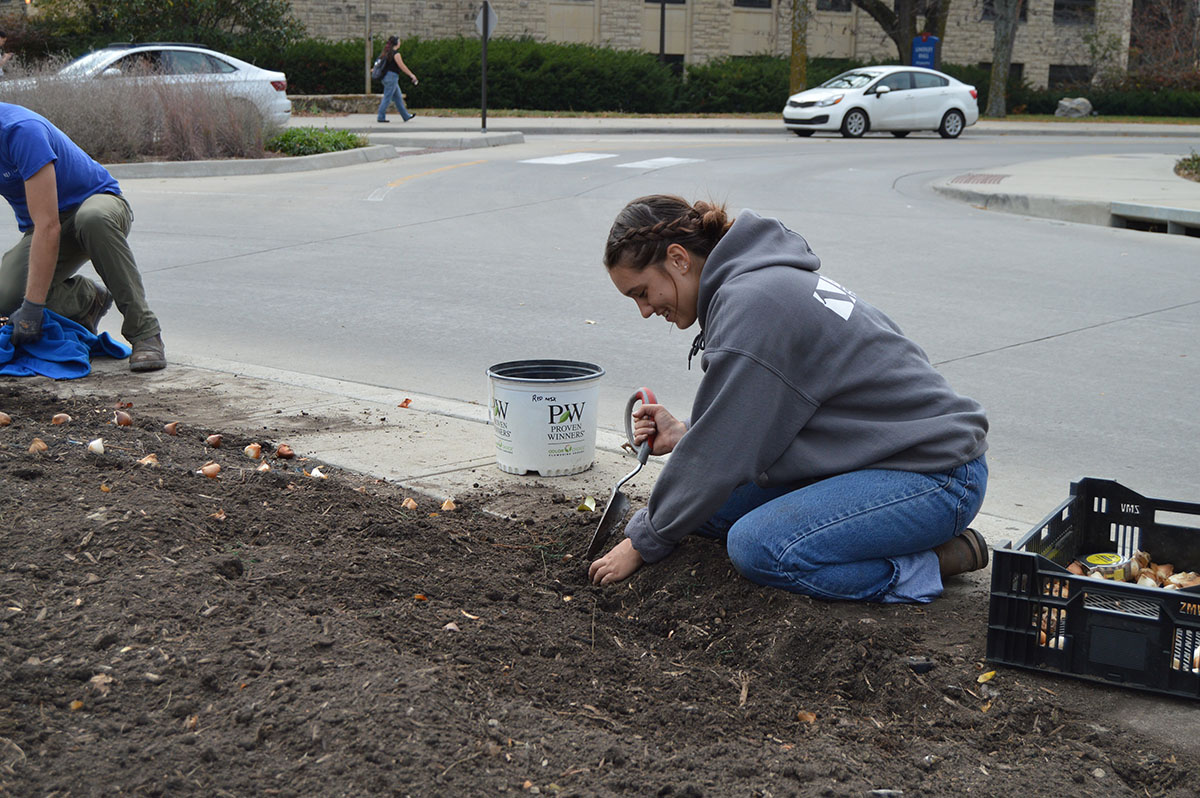
“I want to see the entire campus managed in a way that reflects our views,” Fearn said. “Some places are going to look more wild, and some places are going to look more conventional and traditional. All that is fine, but we don’t want plants out of place. We don’t want dead plants. We want the whole university landscape to reflect our intention.”
With the reveal of KU’s proposed 2024 campus master plan, which outlines the goals for campus buildings, facilities and infrastructure for the next 10 years, the grounds crew will have clearer guidelines to shape its intentions. The master plan is currently being finalized and will ultimately need to be approved by the Kansas Board of Regents.
A new greenway in the proposed campus master plan would connect west, central and north districts and enhance the campus’ biodiversity. The plan also includes reducing the amount of turfgrass on campus, preservation stewardship, incorporating a nature preserve with a trail and adding native and adapted plants, as well as shade trees placed in lines and clusters, to the ecosystem.
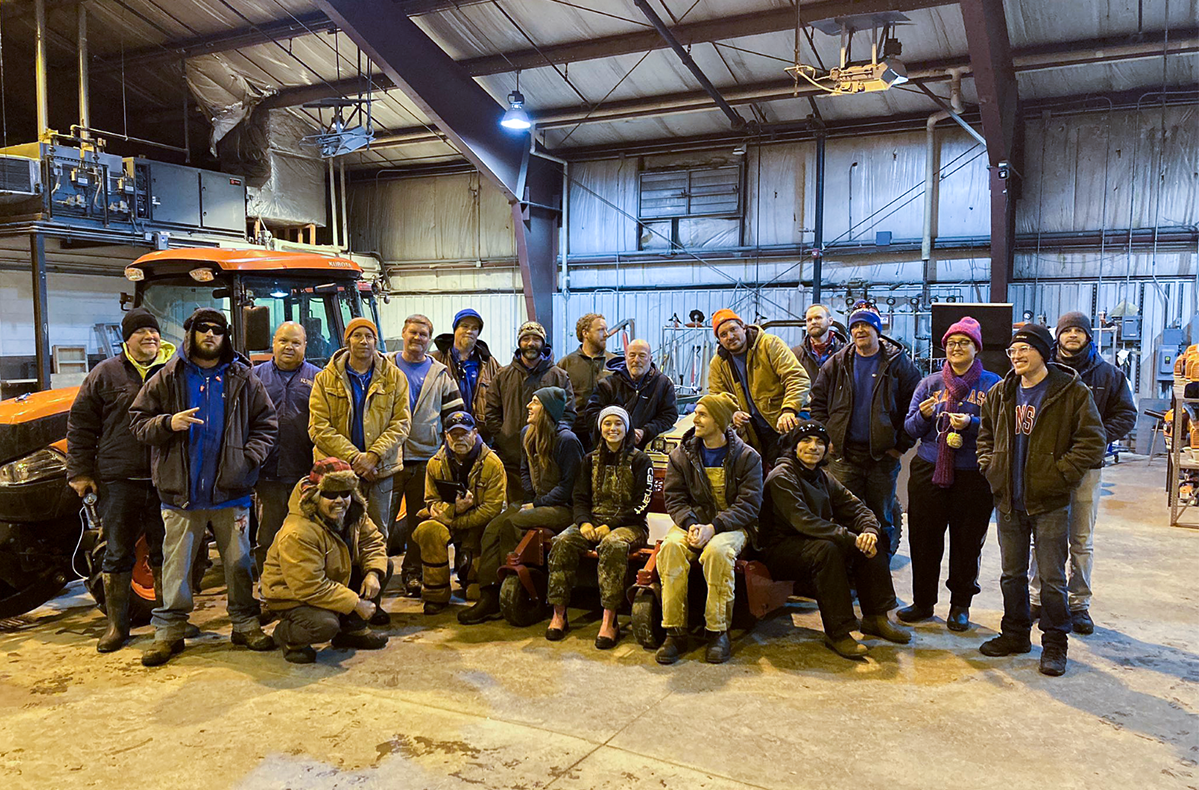
“Campus is largely a people mover now, where people are walking through to get from point A to point B,” Fearn said. “Rather than just providing small destinations along the way where people can stop and enjoy the landscape, we’re trying to create an environment throughout campus that people can enjoy and use for studying, socializing and relaxing without feeling like it’s just getting them from building to building.”
Fearn is not alone in carrying out this vision. Along with long-term planners like Mark Reiske, university architect, and Allison Gerth, landscape architect project manager, about 25 grounds staff are kept busy year-round with a number of responsibilities for maintaining and executing new projects on the 1,200-acre Lawrence campus.
They mow, renovate full beds, plant greenery, remove leaves, pick up trash, prune plants and trees, plow ice and snow, and more, even creating Strong Hall’s 7-foot tall handmade wreath with materials foraged from campus.
“If you see something outside, we do it,” said Willie Justus, landscape worker.
A job for all seasons
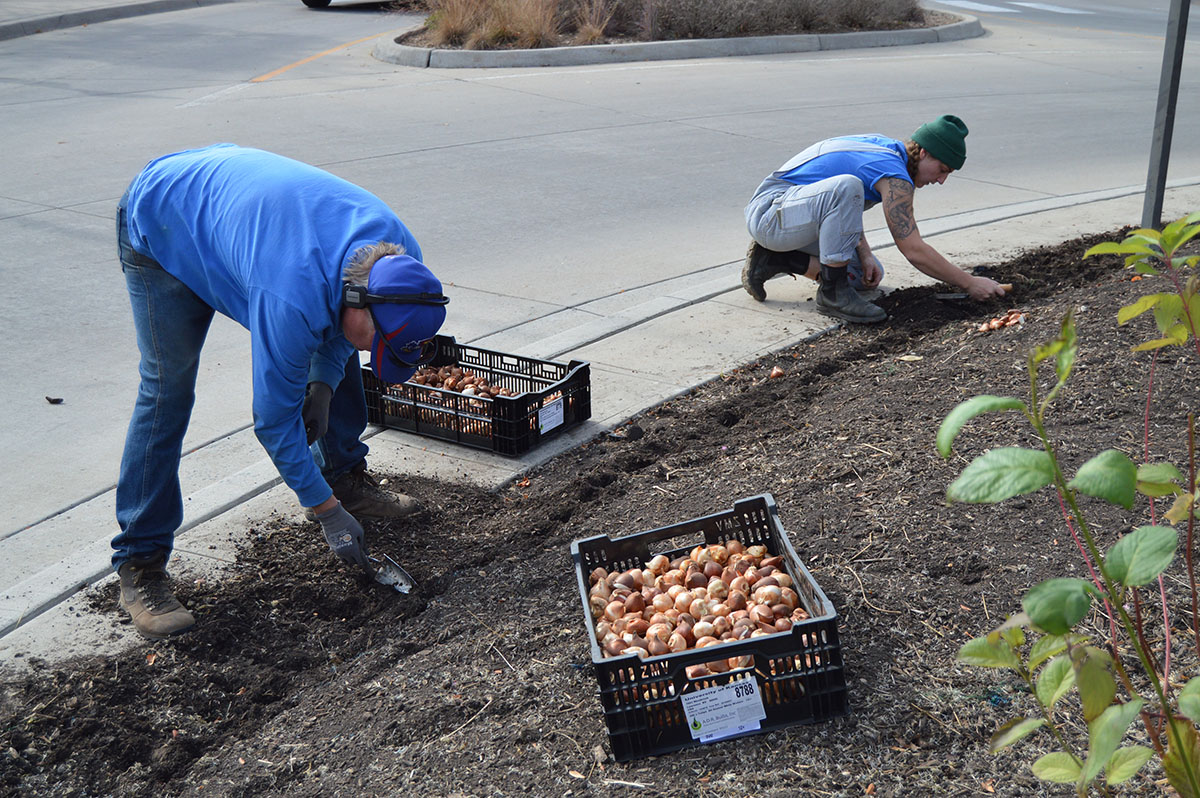
Crouched in a freshly turned bed at the Chi Omega Fountain on a balmy November day, Katherine Stringer, senior landscape worker, shoved tulip bulbs in the pockets of her overalls. Then, trowel in hand, she deftly created small holes at the edge of the fountain and plopped in the bulbs one by one. Over the next couple of weeks, Stringer and the horticulture team planted about 27,000 bulbs across campus. With the coming of spring, these plants have bloomed in a bright array of red, yellow and white tulips.
“I would say a big draw to the job for me is the immediate gratification of the work you do,” she said. “It’s very nice to start a task and transform these areas and see the fruits of your labor. You get to create a lot of beauty as well.”

A typical day begins at 6:30 a.m. before the rest of campus becomes active. Workers are split into teams, led by Liam Reynolds, horticulture supervisor, and Mike Jones, maintenance supervisor, and assigned to routes, which determine which tasks and projects they work on throughout the week.
In the warmer seasons, the days are dedicated to mowing, gardening, managing trees, clearing weeds and anything else related to the outdoor landscape. During the winter, the team, as well as additional staff from facilities, custodial and transportation services, are also strapped with the Herculean task of preparing campus ahead of storms as well as removing snow and ice from roads and sidewalks.
A diverse team challenging the status quo
Even after hours of physical labor, some landscape staff also enjoy gardening and outdoor activities in their own time. Emily Foltz, senior landscape worker, said she often tends to her houseplants and goes hiking, and Scott Cramer, landscape worker, forages food from his natural backyard garden.
Many crew members don’t come from landscaping backgrounds, however. The job has brought together a group with a wide range of experiences, from assisting on anthropologic digs in Central America to performing as a one-man cover band at local gigs. With a doctorate in oboe performance from KU, Foltz has even recorded a CD with the KU Wind Ensemble and Kansas Virtuosi honoring the late Ecuadorian composer Luis Humberto Salgado.
Justus said everyone’s diverse backgrounds work to the team’s advantage as their different ideas create an interesting mix of industry standards and unconventional approaches to landscaping.
“I would say we’ve been doing entirely new approaches to everything, even since I came on two years ago,” Justus said. “With Joe and Liam, we’ve really been challenging the status quo. One thing that’s really fun is that if you get on Google Maps and check out old views on some of the plantings versus what we do now, it’s an entirely different ballgame.”
Cramer likened the approach to an innovative chef. While using more native plants in the landscape is all well and good, he said their job is also about making those plantings look intriguing and eye-catching.
“Making that all line up is where it’s at,” Cramer said. “If you’re a chef or a cook and you’re really into it, you don’t want to make the same old meat and potatoes. You want to use cutting-edge stuff and flavor, so I think that’s what we’re kind of into. And we really are into it.”
Fearn and the crew pointed out the space between Chalmers, Marvin and Lindley halls as an area they’re particularly proud of and would like to emulate elsewhere. The garden is filled with a balance of groomed and native growth, and a seating area invites students to pause and take a break between classes.
“Two years ago, this would’ve just been pear trees and mulch,” Fearn said. “Now you see a rotation of plants, you see a lot of texture, movement, some evergreens, grasses, etc. We’re leaning heavily into natives in this area. The flower beds here are closest to what we’re trying to do in a lot of different areas on campus. It doesn’t need any water or much mulch, and you can see the pollinators on it. All we need to do is mow it in the spring, and that’s it.”
Native gardening can be a slow payoff, as it can take about three years for them to fully take and become established, Foltz said. But afterward, the plantings will look much fuller, and the maintenance needed will be less time-consuming.
“’They ‘sleep, creep and leap’ is the Missouri Conservationist’s little catchy saying,” she said. “The first year it’s probably not going to look like much if you put in pretty small plants. The next year they’re going to look pretty good, like outside Chalmers and the engineering building, but just wait until next year when it’s settled in — when they leap.”
As one of their larger projects, Fearn said the team and officials are looking at taking out nearly 50 acres of turfgrass across campus and eventually managing those areas as prairie. They additionally want to intervene in iconic spots on campus to add more visual interest, such as in front of Strong Hall. The crew has also been working on adding plants and development to areas that have previously been bare or overlooked, such as by lampposts or along stairways.
Nurturing campus connections
At the end of the day, Fearn said the grounds crew’s work is in the interest of helping people connect with the physical environment on campus.
“Whether it’s students, faculty, staff, alumni, visitors or the Lawrence community, I’ve always said the grounds at a university touch the entire community in a way that no other entity does. Everybody interacts with the landscape,” Fearn said.
One way the team tries to connect to the campus community at large is the grounds crew social media, @kugrounds on Instagram and X, formerly known as Twitter. There, Fearn highlights the team’s work, as well as its connections to students and campus innovation and progress. Whether it’s the latest planting project or interactions with people walking their dogs on campus, the photos and posts help build a stronger sense of community.
“We have a very passionate team, and we put our backs, our minds and our hearts into our job,” Fearn said. “Social media was a way to convey that because we’re largely on campus all day, every day, and we want to show everyone why we love this campus.”
The crew also collaborates with students on campus projects at times. Sarah Reuben-Hallock, sophomore in environmental studies, is a member of multiple sustainability-focused organizations such as Sunrise KU, the KU Botany Club’s native plant committee and the Center for Community Outreach’s Earth program, whose joint projects have included the creation of a monarch way station and “snag” site, an area of dead trees that serve as habitats for wildlife.
With support from the grounds crew, Reuben-Hallock said she hopes to leverage its influence as a student to support the campus vision of invoking the tallgrass prairie and advocate for solutions and resources to protect the campus environment for future generations.
“KU boasts an undeniably picturesque landscape characterized by rolling hills and a vibrant array of trees that never fail to captivate me during my walks across campus,” Reuben-Hallock said. “Because of the importance of reflecting the ecological essence of our region, the grounds crew’s work is pivotal not only for the present but also for the future sustainability of our campus. I wholeheartedly endorse and value their contributions and appreciate their willingness to involve students in shaping our campus’s aesthetic and ecological identity.”
Fearn and his team’s work additionally supports the institutional priority of Healthy & Vibrant Communities in KU’s Jayhawk Rising strategic plan. The grounds crew also plays a key role in student and employee recruitment.
“The beauty of our campus is important to creating a healthy, vibrant place for our people to work, study and live,” said Barbara Bichelmeyer, provost and executive vice chancellor. “The landscaping team is on the front line of our recruiting efforts by creating a beautiful and welcoming campus environment for prospective students and employees.”
A small but mighty team
As Fearn and his team continue to pivot toward a strategy of more native and sustainable landscaping, they are keenly aware of their immense responsibility to the campus community. It can be challenging at times balancing the requests of all the various stakeholders on campus with practicality and sustainability in mind, as well as managing the expectations of what the 25-person team can physically do; but ultimately, the work will get done.
“I tell my team, ‘Failure is not an option, and we’re going to have to do it,’” Fearn said. “But the great thing about this team is we are fired up. This is a highly motivated crew, and they’re doing it out of a sense of pride, team cohesion and professionalism, and I love that. When I got here, I had some ideas, and they had some ideas, and we put those together, so it’s a team effort. Take away any of these people, and we’re not the same.”